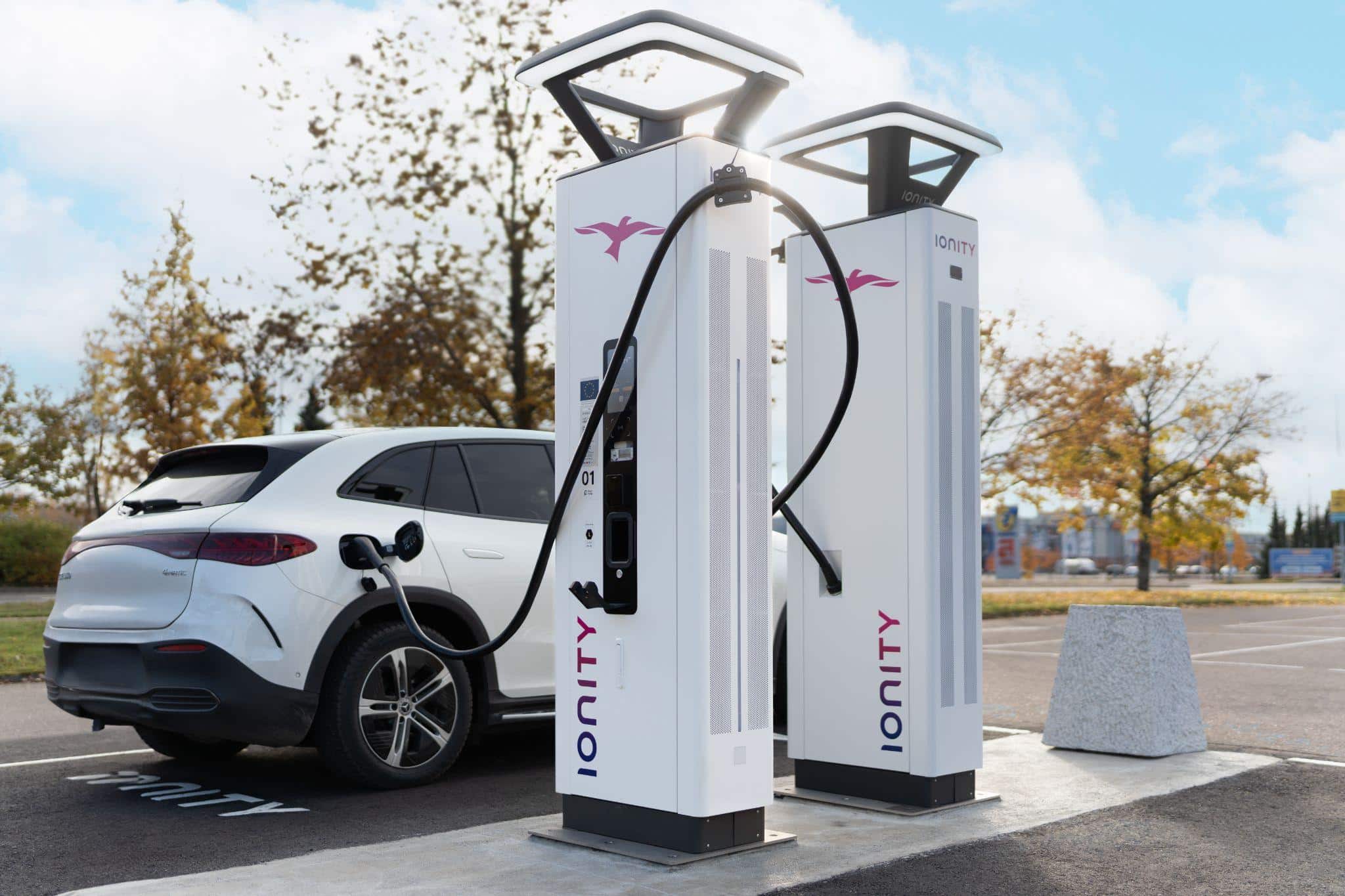How Shopping Malls Can Profit from EV Charging Stations
The retail landscape is undergoing a profound transformation as consumer habits evolve alongside technological advancements. Shopping mall operators face unprecedented challenges with the rise of e-commerce, but emerging opportunities exist in unexpected places, particularly at the intersection of retail and sustainable transportation.
Forward-thinking mall owners are discovering that electric vehicle charging stations aren’t merely amenities but potential profit centers that can revitalize their properties. The installation of charging infrastructure from reputable electric car charger manufacturers like Ekoenergetyka is proving to be
The retail landscape is undergoing a profound transformation as consumer habits evolve alongside technological advancements. Shopping mall operators face unprecedented challenges with the rise of e-commerce, but emerging opportunities exist in unexpected places, particularly at the intersection of retail and sustainable transportation.
Forward-thinking mall owners are discovering that electric vehicle charging stations aren’t merely amenities but potential profit centers that can revitalize their properties. The installation of charging infrastructure from reputable electric car charger manufacturers like Ekoenergetyka is proving to be a strategic investment rather than just a sustainability checkbox.
The Financial Equation of Mall-Based Charging
The economic model for charging stations at retail locations differs significantly from standalone charging facilities. When properly implemented, these installations create multiple revenue streams:
- Direct charging revenue – The most obvious income source comes from electricity sales, with typical profit margins ranging from 15-30% depending on local utility rates and charging speed options
- Extended dwell time spending – EV owners spend an average of 45-60 minutes at charging locations, translating to approximately $23-47 in additional per-visit retail expenditures
- Property value enhancement – Commercial properties with EV infrastructure command 6-8% higher lease rates and show improved occupancy metrics
The presence of charging stations transforms parking spaces from cost centers into active revenue generators while simultaneously addressing sustainability goals.
Strategic Placement Considerations
Location selection within mall properties requires balancing visibility, convenience, and electrical infrastructure capabilities. The optimal positioning strategy typically involves:
- Distributing chargers between high-visibility front entrances (promoting brand association) and convenient side areas (ensuring availability)
- Allocating 2-3% of total parking capacity for charging in initial phases, with infrastructure preparation for expansion to 8-10%
- Prioritizing locations near food courts or entertainment venues where longer dwell times are expected
- Installing wayfinding signage throughout the property highlighting charging availability
Thoughtful placement maximizes both utilization rates and cross-shopping opportunities, enhancing the overall return on investment.
Monetization Models That Work
Shopping mall operators can employ various business models for charging services, each with distinct advantages:
- Direct ownership and operation – Malls purchase and manage the infrastructure, retaining all revenue but assuming maintenance responsibilities
- Revenue-sharing partnerships – Charging network operators install equipment at minimal cost to the property while splitting usage revenue (typically 60/40 in favor of the network initially)
- Tenant-subsidized implementation – Anchor stores or premium tenants fund installation in exchange for preferential placement or marketing benefits
- Advertising-supported deployment – Digital displays integrated with charging stations create additional advertising inventory, offsetting infrastructure costs
Most successful implementations combine elements from multiple models, creating flexible approaches that adapt to changing market conditions and usage patterns.
Customer Attraction and Retention Impact
Beyond direct revenue, charging infrastructure affects overall mall performance metrics:
- Demographic targeting – EV owners typically represent higher-income demographics with 28% greater disposable income than average shoppers
- Competitive differentiation – Malls with comprehensive charging infrastructure report 12-16% higher return visit rates among EV-owning customers
- Digital engagement opportunities – Charging sessions create natural touchpoints for loyalty program enrollment and promotional offers
- Weather-resistant visitation – Charging needs persist regardless of weather conditions, creating consistent traffic even during typically slow periods
The data consistently shows that charging availability transforms occasional visitors into regular customers with predictable visitation patterns.
Technology Selection Considerations
Not all charging equipment delivers equal benefits for retail environments. Key specifications to evaluate include:
- Charging speed appropriateness – Balancing faster charging (which reduces dwell time) with slower options (which encourage shopping)
- Reliability metrics – Equipment uptime directly impacts customer satisfaction and revenue generation
- Networking capabilities – Integration with mall apps and loyalty programs enhances the customer experience
- Future-proofing features – Compatibility with emerging vehicle technologies ensures longer infrastructure relevance
- Aesthetic considerations – Design elements that complement mall architecture rather than appearing as utilitarian afterthoughts
The technology selection process should involve multiple stakeholders including property management, marketing teams, and electrical contractors to ensure all perspectives are considered.
Implementation Timeline and ROI Expectations
Realistic financial planning for charging infrastructure requires understanding the typical deployment timeline:
- Assessment phase (1-2 months) – Site evaluation, electrical capacity analysis, and preliminary vendor selection
- Planning and approvals (2-3 months) – Permitting, utility coordination, and finalization of installation specifications
- Infrastructure preparation (1-3 months) – Electrical upgrades, conduit installation, and site preparation
- Equipment installation (2-4 weeks) – Physical mounting, connection, and commissioning
- Marketing and promotion (ongoing) – Building awareness among target customers
Most mall installations achieve breakeven within 24-36 months when accounting for all direct revenue streams, with significantly faster returns when factoring increased tenant sales.
Case Studies: Success Stories
Several mall operators have demonstrated compelling results from charging implementations:
- Westfield Valley Fair (California) – Installed 32 charging stations across premium parking areas, reporting 94% average utilization and $380,000 in additional annual food court revenue attributable to charging visitors
- Yorkdale Shopping Centre (Toronto) – Deployed 18 charging points using a tenant-subsidized model, achieving 100% cost recovery within nine months through increased property valuation
- Bonaire Mall (Georgia) – Implemented 12 charging stations with integrated digital signage, generating $42,000 annually in advertising revenue beyond charging fees
These examples highlight the diverse approaches successful properties have taken to maximize returns.
Common Implementation Mistakes to Avoid
Learning from unsuccessful deployments reveals several patterns to avoid:
- Installing insufficient power capacity, limiting future expansion possibilities
- Selecting chargers based solely on purchase price rather than reliability metrics
- Failing to integrate charging availability into overall marketing communications
- Treating charging as a purely operational concern rather than a strategic asset
- Neglecting to collect and analyze usage data to optimize pricing and expansion
Properties that approach charging as merely a sustainability initiative rather than a business opportunity consistently underperform in both utilization metrics and financial returns.
The Future of Mall Charging Economics
The economic model for mall-based charging continues to evolve with several emerging trends:
- Integration with renewable energy generation – On-site solar production coupled with battery storage enhances profitability by reducing utility costs
- Vehicle-to-grid capabilities – Next-generation chargers enabling bidirectional power flow create additional revenue through grid services
- Autonomous vehicle preparation – Charging areas designed to accommodate future self-driving vehicle needs
- Charging-centric tenant selection – Prioritizing businesses with natural synergy to charging dwell times
- Premium service tiers – Reservation capabilities and enhanced amenities for subscription customers
Mall operators who establish charging infrastructure today gain valuable positioning for these evolving opportunities while building customer loyalty and data resources.
The transformation of shopping malls through strategic charging infrastructure represents one of the most promising convergence points between retail reinvention and transportation electrification.
Properties that approach this opportunity with business sophistication rather than merely environmental motivations stand to gain significant competitive advantages in the evolving retail landscape.
a strategic investment rather than just a sustainability checkbox.
The Financial Equation of Mall-Based Charging
The economic model for charging stations at retail locations differs significantly from standalone charging facilities. When properly implemented, these installations create multiple revenue streams:
- Direct charging revenue – The most obvious income source comes from electricity sales, with typical profit margins ranging from 15-30% depending on local utility rates and charging speed options
- Extended dwell time spending – EV owners spend an average of 45-60 minutes at charging locations, translating to approximately $23-47 in additional per-visit retail expenditures
- Property value enhancement – Commercial properties with EV infrastructure command 6-8% higher lease rates and show improved occupancy metrics
The presence of charging stations transforms parking spaces from cost centers into active revenue generators while simultaneously addressing sustainability goals.
Strategic Placement Considerations
Location selection within mall properties requires balancing visibility, convenience, and electrical infrastructure capabilities. The optimal positioning strategy typically involves:
- Distributing chargers between high-visibility front entrances (promoting brand association) and convenient side areas (ensuring availability)
- Allocating 2-3% of total parking capacity for charging in initial phases, with infrastructure preparation for expansion to 8-10%
- Prioritizing locations near food courts or entertainment venues where longer dwell times are expected
- Installing wayfinding signage throughout the property highlighting charging availability
Thoughtful placement maximizes both utilization rates and cross-shopping opportunities, enhancing the overall return on investment.
Monetization Models That Work
Shopping mall operators can employ various business models for charging services, each with distinct advantages:
- Direct ownership and operation – Malls purchase and manage the infrastructure, retaining all revenue but assuming maintenance responsibilities
- Revenue-sharing partnerships – Charging network operators install equipment at minimal cost to the property while splitting usage revenue (typically 60/40 in favor of the network initially)
- Tenant-subsidized implementation – Anchor stores or premium tenants fund installation in exchange for preferential placement or marketing benefits
- Advertising-supported deployment – Digital displays integrated with charging stations create additional advertising inventory, offsetting infrastructure costs
Most successful implementations combine elements from multiple models, creating flexible approaches that adapt to changing market conditions and usage patterns.
Customer Attraction and Retention Impact
Beyond direct revenue, charging infrastructure affects overall mall performance metrics:
- Demographic targeting – EV owners typically represent higher-income demographics with 28% greater disposable income than average shoppers
- Competitive differentiation – Malls with comprehensive charging infrastructure report 12-16% higher return visit rates among EV-owning customers
- Digital engagement opportunities – Charging sessions create natural touchpoints for loyalty program enrollment and promotional offers
- Weather-resistant visitation – Charging needs persist regardless of weather conditions, creating consistent traffic even during typically slow periods
The data consistently shows that charging availability transforms occasional visitors into regular customers with predictable visitation patterns.
Technology Selection Considerations
Not all charging equipment delivers equal benefits for retail environments. Key specifications to evaluate include:
- Charging speed appropriateness – Balancing faster charging (which reduces dwell time) with slower options (which encourage shopping)
- Reliability metrics – Equipment uptime directly impacts customer satisfaction and revenue generation
- Networking capabilities – Integration with mall apps and loyalty programs enhances the customer experience
- Future-proofing features – Compatibility with emerging vehicle technologies ensures longer infrastructure relevance
- Aesthetic considerations – Design elements that complement mall architecture rather than appearing as utilitarian afterthoughts
The technology selection process should involve multiple stakeholders including property management, marketing teams, and electrical contractors to ensure all perspectives are considered.
Implementation Timeline and ROI Expectations
Realistic financial planning for charging infrastructure requires understanding the typical deployment timeline:
- Assessment phase (1-2 months) – Site evaluation, electrical capacity analysis, and preliminary vendor selection
- Planning and approvals (2-3 months) – Permitting, utility coordination, and finalization of installation specifications
- Infrastructure preparation (1-3 months) – Electrical upgrades, conduit installation, and site preparation
- Equipment installation (2-4 weeks) – Physical mounting, connection, and commissioning
- Marketing and promotion (ongoing) – Building awareness among target customers
Most mall installations achieve breakeven within 24-36 months when accounting for all direct revenue streams, with significantly faster returns when factoring increased tenant sales.
Case Studies: Success Stories
Several mall operators have demonstrated compelling results from charging implementations:
- Westfield Valley Fair (California) – Installed 32 charging stations across premium parking areas, reporting 94% average utilization and $380,000 in additional annual food court revenue attributable to charging visitors
- Yorkdale Shopping Centre (Toronto) – Deployed 18 charging points using a tenant-subsidized model, achieving 100% cost recovery within nine months through increased property valuation
- Bonaire Mall (Georgia) – Implemented 12 charging stations with integrated digital signage, generating $42,000 annually in advertising revenue beyond charging fees
These examples highlight the diverse approaches successful properties have taken to maximize returns.
Common Implementation Mistakes to Avoid
Learning from unsuccessful deployments reveals several patterns to avoid:
- Installing insufficient power capacity, limiting future expansion possibilities
- Selecting chargers based solely on purchase price rather than reliability metrics
- Failing to integrate charging availability into overall marketing communications
- Treating charging as a purely operational concern rather than a strategic asset
- Neglecting to collect and analyze usage data to optimize pricing and expansion
Properties that approach charging as merely a sustainability initiative rather than a business opportunity consistently underperform in both utilization metrics and financial returns.
The Future of Mall Charging Economics
The economic model for mall-based charging continues to evolve with several emerging trends:
- Integration with renewable energy generation – On-site solar production coupled with battery storage enhances profitability by reducing utility costs
- Vehicle-to-grid capabilities – Next-generation chargers enabling bidirectional power flow create additional revenue through grid services
- Autonomous vehicle preparation – Charging areas designed to accommodate future self-driving vehicle needs
- Charging-centric tenant selection – Prioritizing businesses with natural synergy to charging dwell times
- Premium service tiers – Reservation capabilities and enhanced amenities for subscription customers
Mall operators who establish charging infrastructure today gain valuable positioning for these evolving opportunities while building customer loyalty and data resources.
The transformation of shopping malls through strategic charging infrastructure represents one of the most promising convergence points between retail reinvention and transportation electrification.
Properties that approach this opportunity with business sophistication rather than merely environmental motivations stand to gain significant competitive advantages in the evolving retail landscape.








